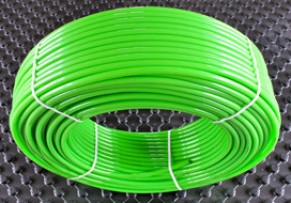Thermoplane Benefits
A Single Solution
Bringing together the heating and construction industries, Thermoplane offers a single point of order for the manufacture, design, supply and install of a heated, liquid screed.
This turnkey solution offers the very best from both industries, utilising the knowledge and skills of recognised industry experts brought together with a single objective – to deliver the very best heat emitter to complement the future needs of building construction and services.
With the largest network of specialist partners, hand picked as the best all round businesses within the industry, Thermoplane is available from market leading screed manufacturers with depots throughout the U.K. and Ireland
Renewables
It is widely recognised through the Energy Savings Trust Report and other publications such as the the Heat Emitter Guide, that heat pumps rely on low flow temperatures in oder to reach their optimum efficiencies.
It has been proved in recent times that it is possible to heat buildings with low flow temperatures however, there can be opposing factors that can effect system performance whilst increasing fuel efficiencies.
Underfloor heating embedded in high mass systems such as traditional screeds, allow heat pumps to run at lower temperatures than serving alternative emitters such as timber based ufh or radiators.
The reduction in flow temperature can then have a negative affect in response due to the greater inertia resulting from greater mass.
In recognition of this, Thermoplane have set out on a long term research and development program looking to emphasise the conductive nature of liquid screeds, reducing the overall thermal mass, whilst increasing compressive strengths and elasticity.
Our aim is to anticipate future trends in reduced heating loads due to greater insulated building and further develop a super reactive emitter that can reduce inertia and respond to intermittent usage of heating systems to suit occupation periods.
Benefits of Thermoplane compared to conventional systems using standard screed
Environmental
Cement is used to “bind” the materials in conventional screeds. To make 1 tonne of this “binder” usually requires 1.6 tonnes of virgin materials to be crushed, blended then heated to around 1450oC. The resultant “clinker” is then crushed to form the cement. Gypsol, the prefered binder used in Thermoplane systems, is manufactured from materials recovered from the production of acids by the chemical industry. These are blended with special additives and warmed to around 45oC to produce Gypsol. The production of 1 tonne of Gypsol saves 0.98 tonnes of waste materials being sent to landfill. For a standard school extension, say 2,500m2, this would imply the diversion of some 90 tonnes from landfill.
In addition, Thermoplane systems, owing to the strength of the screed, may be laid to a thinner depth than conventional screeds. As a result, they are far more responsive; they have a lower “inertia”. There is therefore, no need to turn on the heating systems well in advance of the need for spaces to be warm. Indeed, conventional systems often need to be kept operating, and consuming fuel, over the weekend in order to achieve acceptable temperatures on a Monday morning. Thermoplane systems may reach operating temperatures within a short amount of time.
Future Proofing
Liquid screeds may become the floor of choice in the future, since they offer considerable advantages in terms of their thinner profile faster curing times than conventional screeds so may provide for greater ceiling heights and faster construction. The installation of complete Thermoplane systems such as floors, would not only also allow the provision of underfloor heating, but it would also accommodate the conversion to cooling if required at some future date.


